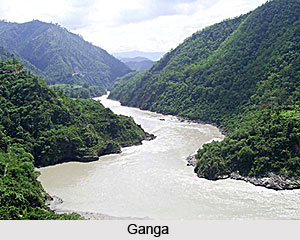 Irrigation system in Mughal India was quite developed and it was made possible by storing well water, surface water as well rain water. Water from these sources was stored in tanks and then distributed across the vast agricultural lands through a large network of canals. Further, some water-lifting devices were also used for utilising the stored water. During the Mughal rule, both in the Doab and Haryana region the role of canal irrigation became quite significant by the closing decades of the nineteenth century. It is further to the western province particularly in the Indus plains where the modern canal system brought about a vital change. One of the most important features of the irrigation system in Mughal India was the artificial irrigation system. It supplemented the natural bounty of the monsoons. The chief means employed for this purpose had been the construction of wells, tanks and canals.
Irrigation system in Mughal India was quite developed and it was made possible by storing well water, surface water as well rain water. Water from these sources was stored in tanks and then distributed across the vast agricultural lands through a large network of canals. Further, some water-lifting devices were also used for utilising the stored water. During the Mughal rule, both in the Doab and Haryana region the role of canal irrigation became quite significant by the closing decades of the nineteenth century. It is further to the western province particularly in the Indus plains where the modern canal system brought about a vital change. One of the most important features of the irrigation system in Mughal India was the artificial irrigation system. It supplemented the natural bounty of the monsoons. The chief means employed for this purpose had been the construction of wells, tanks and canals.
Further, historical records show that in the Upper Gangetic plains wells were the principal sources of irrigation. Different methods were applied for drawing water out of the wells for irrigation purposes. Most of the wells were kachcha (not concreted). Those used to be dug afresh almost every year. Cultivation of crops depended mostly upon rainfall and only partly on wells. Thus, wells were considered important at that time. It was also believed that in many tracts, especially in the central Ganga-Yamuna Doab, there was a heavy declination in the number of wells, owing to interference by modern canals with the natural drainage system of the country. Moreover, archaeological remains of the pre-colonial system of south Indian dams, tanks and canals testify to the great antiquity of irrigation tanks in peninsular India.
In cases where a river rises and inundates the fields seasonally every year, both the irrigation system and fertilisation were considered to be natural. The seasonal inundations of the rivers were almost uncontrolled; and nothing reveals their range more clearly than the spectacular changes in the river courses which used to take place from time to time. These changes particularly affected cultivation in larger areas. It was in northern India where some large canals were excavated during Mughal period. The Haryana tract was not served by any perennial river. Thus, the common practice in the region was to build dams across the streams for creating artificial inundation or for continuous supply of water for cultivation. Further, in the Punjab province, a small system of canals was brought into existence in the Upper Bari Doab. The common practice had been to either cut artificial channels from the river or canals to lift the water from the river or its branches for supporting agriculture. Thus, it becomes quite clear that irrigation system during Mughal rule was quite advanced supporting the core basis of economy.






































